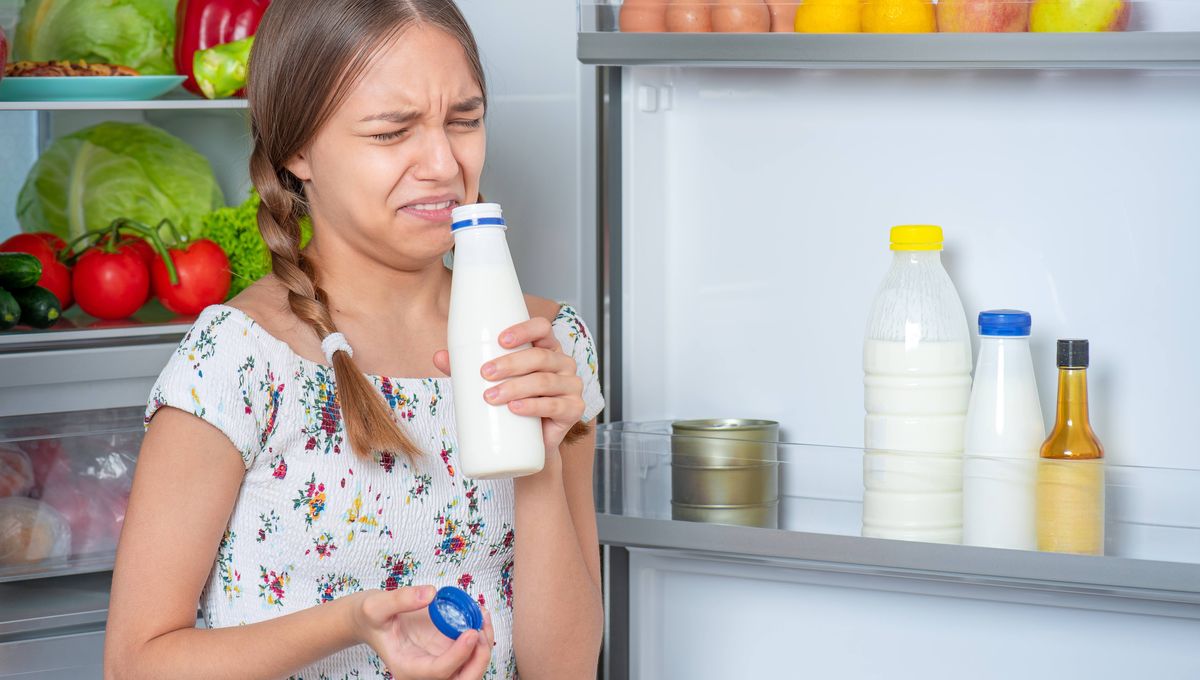
Do you sniff it, read the label, or wait to see bits floating in your coffee or tea? There are many ways to check when milk has gone off, but new research has shown that up to half of consumers decide to throw away milk based only on a brief glance at the date on the carton, regardless of the text surrounding it. In many instances, the content is perfectly good and safe to consume, so pouring it away is a waste.
Why cry over discarded milk?
Food wastage is a big concern across the world. According to the United Nations (UN), the global food waste from households, retailers, and the food service industry amounted to a total of 931 million tonnes in 2019. In many countries, consumer waste accounts for a large proportion of this total. For instance, in America, consumer waste accounts for more than 48 percent of surplus food; this number is even higher in the UK, where about 70 percent of waste comes from households.
The fact that so much food is produced but not eaten has massive impacts on the environment, the economy, and society. The UN believes that between 8-10 percent of global greenhouse gas emissions are associated with wasted food. Moreover, it costs us a lot. In 2013, a landmark study showed that the average American family throws away between $1,365 and $2,275 of food every year.
Clearly, limiting this waste could have significant benefits for both people and the planet.
But for many, knowing when something should be discarded can be tricky, and you would think that the product’s label would be a good place to go for this information. However, new research has shown that this is where confusion seems to set in.
Labels, dates, and poor phrasing
One problem with product labels is that there is common confusion over the meaning of the information they show, a situation made worse by the fact that there is no universal phrasing that addresses this. For instance, in Europe, there are the “best before” and the “used by” dates on products that are meant to indicate the food’s quality (the former) and when it is no longer safe to eat (the latter). In other places, you may have labels like “use by”, “best if used by”, and “sell by”, as well as containers that have no information at all.
For many, all these dates may indicate the same vague thing – the “expiry date” – despite meaning different things. And according to a team of researchers at Ohio State University, the date is often the only thing people look at.
In their study, the researchers tracked consumers’ eye movements when evaluating milk container images. When making a decision on whether to discard milk, the participants fixated on the date printed on the label more than they did on the accompanying text.
Each of the 68 participants viewed two flights of milk samples. The first set included images of eight half-empty milk containers with the same phasing but different dates on them. These dates varied from six days after the day of the study, to a week before it. They were presented alongside two physical samples of milk – one was fresh and one was of a poor quality that was allowed to go sour.
The second set included unlabeled milk containers alongside physical samples of good and poor milk.
In both presentations, labels were used to imply that the physical samples had come from corresponding containers that appeared in the images.
The results of the eye-tacking technology indicated that participants spent more time looking at the date on the label, rather than the phrasing that accompanied it. They also looked at the date more frequently and their eyes were drawn to the date 44 percent faster than to the phrases.
Moreover, even when participants looked at the phrasing, the type of phrase did not seem to affect how long they looked at it.
The quality of the milk – whether it was sour or not – did affect the participant’s overall decision to throw it away, but its quality did not influence the information participants looked at on the labels.
“The milk was intentionally made to smell a bit sour, and it didn’t really fundamentally change the fact that people really focus on the date,” Brian Roe, professor of agricultural, environment and development economics at The Ohio State University, said in a statement.
“But we were a bit surprised that over half of the viewing sessions featured no attention on the phrase whatsoever,” he said. “The date is more salient – you have to reference it against the calendar. It’s more actionable than the phrase is.
These results match those of previous studies that Roe has led and show that the intention to discard food is primarily based on the date, not the phrasing on labels.
This could have a big impact on future policies that seek to address food wastage.
“For policy reasons, it’s still important to narrow the phrases down to two choices. But that’s only the beginning – there needs to be a broader conversation about pushing those date horizons back to help minimize food waste,” Roe added.
The study is published in Waste Management.
Source Link: How Do You Decide When To Throw Away Milk?